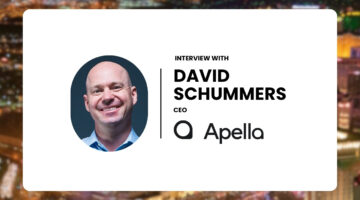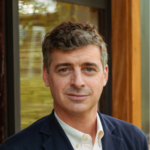
In communities across America, a quiet revolution is reshaping healthcare. It’s not happening in research labs or corporate boardrooms, but in the streets, homes, and communities where necessity sparks creativity, and solutions for the most vulnerable become catalysts for widespread change.
For decades, medical innovation has followed a top-down approach. Cutting-edge treatments and technologies, born in elite institutions, slowly trickle down to the population at large. While this model has driven significant advancements, it’s also left vast segments of society underserved and overlooked.
But what if we flipped this model on its head? What if we placed the needs of the most vulnerable at the heart of healthcare innovation? This isn’t simply about equity; it’s about unleashing a wave of creativity that could transform healthcare for everyone. CIOs and CEOs of America’s health systems need to take note and direct innovation budgets accordingly.

As Healthcare and Biopharma Companies Embrace AI, Insurance Underwriters See Risks and Opportunities
In an interview, Munich Re Specialty Senior Vice President Jim Craig talked about the risk that accompanies innovation and the important role that insurers play.
When healthcare designers focus on low-access populations, they face the most challenging and tightest constraints. This forces them to think creatively, strip away unnecessary complexity and zero in on the most fundamental aspects of care delivery. Chances are you’ve experienced the benefits of what we call trickle-up innovation. Think of it as a “curb-cut effect” for healthcare, named after the sidewalk ramps that were originally designed to overcome barriers from disabilities and ultimately improved accessibility and usability for everyone.
Another example of this concept in action is the home goods brand OXO, whose founder originally designed kitchen utensils for his wife, suffering from arthritis and soon after discovered the tools were easier to wield by anyone. This is the essence of trickle-up innovation.
Bridging gaps in care equity
Consider a rural community with limited access to specialists. Innovators might develop a telemedicine platform that is not only easy to use with low-bandwidth connections but also integrates seamlessly with basic health screenings. This solution, born out of necessity, could prove equally valuable in bustling urban centers, where time constraints and transportation issues can make regular checkups hard to keep.

Transforming the OR: CEO Reveals Game-Changing AI Tech for Better Efficiency
How Apella leverages technology to increase OR efficiency.
By tackling the most basic and essential healthcare challenges with a creative lens, these innovations can solve foundational access problems while unlocking new care models that scale across diverse populations and settings. Innovative strategies born from trickle-up thinking already are reshaping healthcare landscapes:
- Ridesharing For health – Originally implemented to help seniors and car-less patients reach clinics, medical ride-sharing programs have evolved into solutions for parking congestion and even luxury amenities for executive health programs.
- Telemedicine – Services designed for those in remote locations or with inflexible work schedules are now improving care across convenience for patients across all income levels.
- Community health partners – Cityblock, a community-focused health provider, offers over-the-phone assistance. A patient facing a mental health crisis or struggling to meet essential needs simply dials a number and is greeted by a compassionate community health partner. This partner becomes a lifeline, offering guidance, expertise and—most importantly—empathy.
- AI-powered empathy – The UnBIASED team is developing tools that flag subtle signs of bias in healthcare interactions, offering real-time guidance to providers. This technology has the potential to transform patient-provider relationships, ensuring more equitable and empathetic care for all.
Reimagining care delivery
Picture a world in which healthcare isn’t confined to sterile clinics but woven into the fabric of our communities. In Chicago’s South Side, the Black Barbershop Health Outreach Program is turning this vision into reality. Local barbershops and beauty salons are being transformed into health hubs, where customers can get a trim and a blood pressure check in one visit. This creative approach not only improves access but also reimagines the very nature of healthcare delivery. By meeting people where they are – in spaces they trust – we’re not just solving an access problem, we’re fundamentally improving the healthcare experience for everyone.
One model that’s gaining traction is the concept of a “healthplace” — imagine a vibrant marketplace and learning center built within a community that emphasizes education and preventive health. These spaces host events and workshops by local healthcare staff, engaging the community from within. With comfortable sitting areas, access to fresh produce and partnerships with wellness vendors, these healthplaces offer a holistic approach to well-being that goes far beyond medical care.
Mental health facilities and/or services can be embedded directly into the foundation of underserved communities. Envision neighborhoods with strategically placed “hotline alcoves” for those in need of mental health support. The alcove program, which provides safe, private spaces for youth to connect with mental health professionals and access various support services, is putting this idea into action. This innovative approach not only improves access to critical services but also works to destigmatize mental health care.
These aren’t isolated interventions — they represent a paradigm shift in how we approach innovation in healthcare. By starting with the needs of the most vulnerable and applying creative, out-of-the box thinking, we can develop solutions that bridge gaps in care equity and elevate the entire healthcare experience for all. Trickle-up innovation challenges us to see constraints as opportunities, to find elegance in simplicity, and to recognize that the most powerful solutions often come from unexpected inspiration. The future of healthcare isn’t just about high-tech gadgets and breakthrough drugs — it’s about reimagining the entire spectrum of the care environment. Change is possible, starting with those who need it most.
Photo: CASEZY, Getty Images
Noah Waxman, an entrepreneur, brand strategist and award-winning designer who partners with healthcare visionaries around the globe to design and build the health and wellness companies of tomorrow from the ground up. As the CEO and co-founder of the strategy & design firm Cactus, Noah has spearheaded design thinking for global health brands including Advent Health, Mount Sinai, Canyon Ranch, The Mayo Clinic and Blue Zones to create innovative experiences that benefit both provider and patient.
This post appears through the MedCity Influencers program. Anyone can publish their perspective on business and innovation in healthcare on MedCity News through MedCity Influencers. Click here to find out how.







